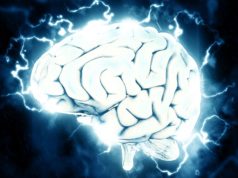A research team in Europe has found a way to obtain adrenaline and enkephalin from adult humans and then isolate and force them to become neurons in the lab. This brings researchers one step closer to finding new treatments for neurodegenerative diseases and chronic pain.The research has been published in STEM CELLS Translational Medicine.
“Chromaffin progenitor cells seem to be a promising cell source due to the potential use in autologous transplantations, which avoids the possibility of immune rejection,” said Monika Ehrhart-Bornstein, Dresden University of Technology’s Center for Regenerative Therapies, Germany, and lead investigator of the study. “Our team had recently described how we isolated chromaffin progenitor cells from the adrenal glands of cows and then treated them so that they differentiated into functional neurons. In this subsequent study, we wanted to learn whether these cells could also be obtained from adult human adrenal glands and then forced to differentiate into neurons, as a prerequisite for future use in transplantation trials.”
Ehrhart-Bornstein collaborated with Claudia Cavadas, professor at the Center for Neurosciences and Cell Biology, University of Coimbra, Portugal, in leading the team of researchers from both universities on the study. They adapted their bovine study method to obtain and isolate the human cells and then treated them with growth factor. When they examined the cells six days later, they had indeed differentiated into neuron-like cells.
“This study both proves the existence of chromaffin progenitor cells in the human adrenal medulla and demonstrates that they can be isolated,” Cavadas said. “These cells may open new perspectives and challenges in the field of regenerative medicine, especially regarding their potential use in the treatment of neurodegenerative and neuroendocrine diseases.”
“While protocols need to be established to entirely remove other cell types from progenitor cultures for their therapeutic use, the potential of these progenitor cells to acquire both neuronal and chromaffin cell phenotypes is unquestionable, making them an interesting new cell source for cell-based therapies. The isolation and characterisation of these valuable cells from human adrenals is the first step toward their potential future use in transplantation therapies,” said Ehrhart-Bornstein.












